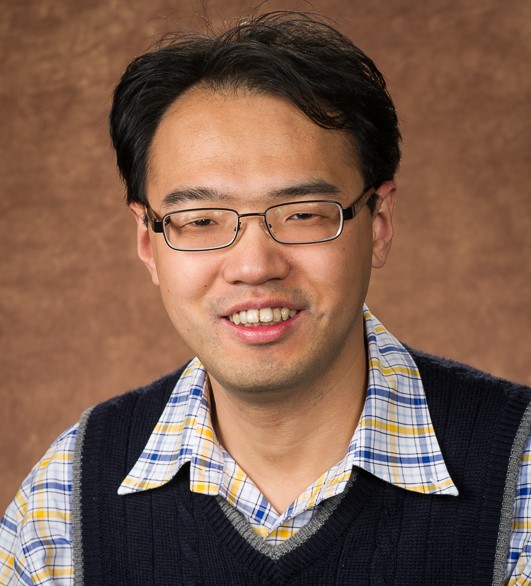Speaker Details
Topic: DNA-Scaffolded Nanoreactors for Biomimetic Catalysis and Molecular Sensing

Jinglin Fu
Professor
Department of Chemistry
Center for Computational and Integrative Biology, Rutgers
University-Camden, Camden, NJ 08103, USA
Dr. Fu received Bachelor’s and Master’s degrees in Chemistry from Zhejiang University in China, a Ph.D degree in Chemistry (2010) from Arizona State University and a three-year postdoc on DNA/protein self-assembly.
Dr. Fu was appointed as an assistant professor in Biochemistry at Rutgers University-Camden in 2013. His research focuses on the self-assembly of biomolecular complexes with precise control on nanometer-scale, and their applications in biochemical pathways organization, biocatalysis, and molecular sensing.
Dr. Fu has received several early-career awards, including of the Cottrell College Science Award, ARO Young Investigator and Presidential Early Career Awards for Scientists and Engineers.
Abstract
Cellular functions rely on a series of organized and regulated multienzyme cascade reactions. The catalytic efficiency of multienzyme complexes depends on the spatial organization of composite components which are precisely controlled to facilitate substrate transport and regulate activities. If these cellular mechanisms can be mimicked and translated to a non-living artificial system, it can be useful in a broad range of applications that will bring the significant scientific and economic impact. Self-assembled DNA nanostructures are promising to organize biomolecular components into prescribed, multi-dimensional patterns. Here, we described a robust strategy for DNA-scaffolded assembly and confinement of biochemical reactions. DNA nanostructures are exploited to organize spatial arrangements of multienzyme cascades with control over their relative distance, substrate diffusion paths, compartmentalization and functional actuation. The combination of addressable DNA assembly and multienzyme cascades promises to deliver breakthroughs toward the engineering of novel biomimetic reactors, which have great potential for broad applications from chemical synthesis, functional biomaterials and biofuel production to therapeutics and diagnosis.
